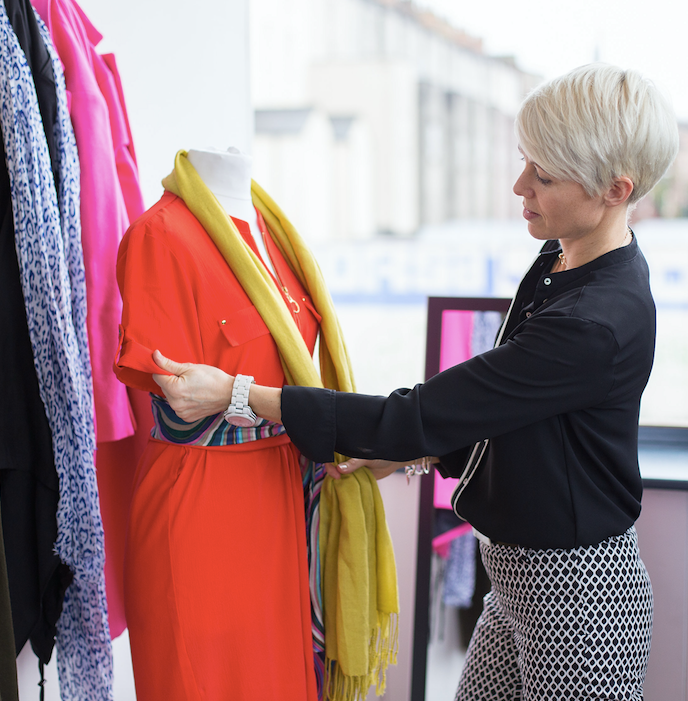As training professionals, most readers here will understand the impact of first impressions. When entering a room of learners or meeting a prospective client, you’ve got a very short time in which to win them over.
In fact, research suggests that first impressions are made in just seven seconds. Within that time, people have already started forming their judgement of you – it’s human nature.
Whilst you can’t change the way the mind works, you can change what your first impression says about you.
With that in mind, perhaps you can ask yourself how your appearance reflects your brand. Here are a few tips.
Consider your market
With any form of communication, you would first consider the reader/recipient. Your clothes are no exception – they tell people a lot about you, so why wouldn’t you tailor that message to the audience you’re approaching?
Who are you appealing to? Ultimately you want to create a good, professional impression to the people you work with, so consider the industry you’re in, the message you are looking to portray and the market you are appealing to.
For example, in a more corporate environment you might choose a smart, tailored look. In a relaxed holistic environment it might be a more casual, yet professional feel.
Think professional
Regardless of industry, there are a few key pointers to consider. Your personal presentation is key and you want to portray the most professional image.
Needless to say, hygiene and personal appearance are one of the most important things to prioritise whilst clean, ironed clothes come a close second.
Making sure you have quality, good fitting clothes will give a more professional overall look too. Aim to please when you’re in front of your audience.
Is it really you?
For some, it’s difficult to achieve a smart professional look if it’s not in your nature to wear tailored clothing often, and that’s why many people opt for a professional uniform. Appearing professional and giving the best impression, however, doesn’t mean you have to be suited and booted all day long or hide behind a uniform, unless it’s absolutely necessary.
If you invest in yourself, others will be more willing to invest in you.
In fact, you can create a highly positive impact if you really know how to dress your shape, wear colours that suit you and identify your true style personality.
Once you’ve nailed this, you’ll be giving the best impression of your brand because it will be a well-considered, stylish look that’s in line with how you want to present yourself.
Know when to draw the line
Whilst you might want to inject some of your style personality to your professional wardrobe, not everything is considered appropriate.
Some aspects you might want to consider adapting when putting together your professional ‘look’ include:
- The length of skirts
- Vests
- Tight fitting tops
- Tattoos, body piercings
- Large quantities of accessories
You get the idea – it’s important to know what is appropriate and when.
Quality over quantity
Make sure your clothes fit properly and are tailored well – good quality goes a long way and people do notice the difference.
Fast fashion quickly goes out of style and cheap clothes are often made badly and can give a negative impression of you and your brand.
How you present yourself isn’t just about appearance – it’s about how that makes you feel and in turn, how that impacts the way you handle situations.
You don’t need a lot of clothes to make a suitable professional wardrobe – you just need to have a few of the right pieces that you can mix and match. Buy less, but buy better.
The thinking here is that if you invest in yourself, others will be more willing to invest in you.
Get help
If you’re not confident with clothes and don’t know what works well on you, investing in a professional image consultant can help educate you on how to represent yourself and your business to its full potential.
An image consultant will work with you to guide you in the right direction, whilst taking in to account your personal preferences, shape, size, style and budget.
Moreover, they’ll equip you with the tools to think differently about how you present yourself, offering an objective eye to help you see the things you might have missed in the past.
Enjoy your clothes
Most importantly, if you look good in your clothes, you’ll feel great and portray a confident professional persona that your audience will admire.
How you present yourself isn’t just about appearance – it’s about how that makes you feel and in turn, how that impacts the way you handle situations.
Before you’ve even said a word, your clothes and body language can speak volumes about you, so it’s important to make sure they’re saying the right things.
Interested in this topic? Read What can L&D professionals learn from the world of branding to help develop great leaders?
As training professionals, most readers here will understand the impact of first impressions. When entering a room of learners or meeting a prospective client, you’ve got a very short time in which to win them over.
In fact, research suggests that first impressions are made in just seven seconds. Within that time, people have already started forming their judgement of you - it’s human nature.
Whilst you can’t change the way the mind works, you can change what your first impression says about you.
With that in mind, perhaps you can ask yourself how your appearance reflects your brand. Here are a few tips.
Consider your market
With any form of communication, you would first consider the reader/recipient. Your clothes are no exception – they tell people a lot about you, so why wouldn’t you tailor that message to the audience you’re approaching?
Who are you appealing to? Ultimately you want to create a good, professional impression to the people you work with, so consider the industry you’re in, the message you are looking to portray and the market you are appealing to.
For example, in a more corporate environment you might choose a smart, tailored look. In a relaxed holistic environment it might be a more casual, yet professional feel.
Think professional
Regardless of industry, there are a few key pointers to consider. Your personal presentation is key and you want to portray the most professional image.
Needless to say, hygiene and personal appearance are one of the most important things to prioritise whilst clean, ironed clothes come a close second.
Making sure you have quality, good fitting clothes will give a more professional overall look too. Aim to please when you’re in front of your audience.
Is it really you?
For some, it’s difficult to achieve a smart professional look if it’s not in your nature to wear tailored clothing often, and that’s why many people opt for a professional uniform. Appearing professional and giving the best impression, however, doesn’t mean you have to be suited and booted all day long or hide behind a uniform, unless it’s absolutely necessary.
If you invest in yourself, others will be more willing to invest in you.
In fact, you can create a highly positive impact if you really know how to dress your shape, wear colours that suit you and identify your true style personality.
Once you’ve nailed this, you’ll be giving the best impression of your brand because it will be a well-considered, stylish look that’s in line with how you want to present yourself.
Know when to draw the line
Whilst you might want to inject some of your style personality to your professional wardrobe, not everything is considered appropriate.
Some aspects you might want to consider adapting when putting together your professional ‘look’ include:
- The length of skirts
- Vests
- Tight fitting tops
- Tattoos, body piercings
- Large quantities of accessories
You get the idea – it’s important to know what is appropriate and when.
Quality over quantity
Make sure your clothes fit properly and are tailored well - good quality goes a long way and people do notice the difference.
Fast fashion quickly goes out of style and cheap clothes are often made badly and can give a negative impression of you and your brand.
How you present yourself isn’t just about appearance – it’s about how that makes you feel and in turn, how that impacts the way you handle situations.
You don’t need a lot of clothes to make a suitable professional wardrobe - you just need to have a few of the right pieces that you can mix and match. Buy less, but buy better.
The thinking here is that if you invest in yourself, others will be more willing to invest in you.
Get help
If you’re not confident with clothes and don’t know what works well on you, investing in a professional image consultant can help educate you on how to represent yourself and your business to its full potential.
An image consultant will work with you to guide you in the right direction, whilst taking in to account your personal preferences, shape, size, style and budget.
Moreover, they’ll equip you with the tools to think differently about how you present yourself, offering an objective eye to help you see the things you might have missed in the past.
Enjoy your clothes
Most importantly, if you look good in your clothes, you’ll feel great and portray a confident professional persona that your audience will admire.
How you present yourself isn’t just about appearance – it’s about how that makes you feel and in turn, how that impacts the way you handle situations.
Before you’ve even said a word, your clothes and body language can speak volumes about you, so it’s important to make sure they’re saying the right things.
Interested in this topic? Read What can L&D professionals learn from the world of branding to help develop great leaders?





